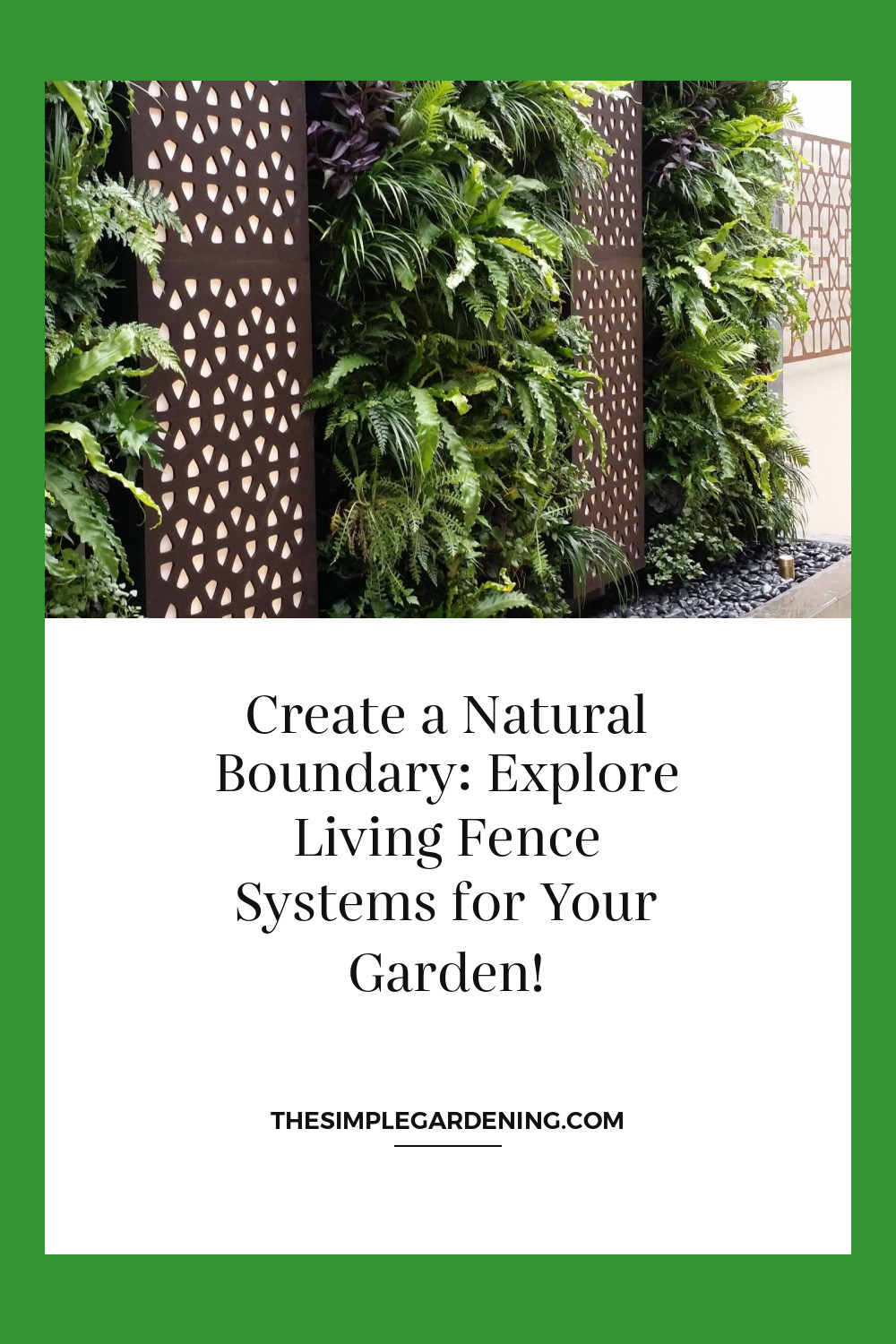Living fences are a dynamic alternative to traditional fencing, offering a blend of natural beauty, functionality, and environmental benefits. Let’s dive into the world of living fence systems and explore how they can enhance your landscape.
Introduction to Living Fence Systems
Definition and Purpose of Living Fences
A living fence is a barrier created by closely planted trees, shrubs, or other plants. Unlike traditional fences made from wood, metal, or plastic, living fences grow and evolve, providing a green, eco-friendly alternative.
Table: Key Purposes of Living Fences
| Purpose | Description |
|---|---|
| Privacy | Creates a natural screen to block views |
| Security | Acts as a barrier to deter trespassers |
| Aesthetics | Enhances landscape beauty with greenery and seasonal changes |
| Windbreak | Reduces wind speed and protects property from wind damage |
| Wildlife Habitat | Provides shelter and food for birds and other wildlife |
Living fences are not only practical but also beneficial for the environment, making them an ideal choice for any garden or property.
Benefits for Privacy, Security, and Aesthetics
Living fences offer numerous benefits that make them a superior choice over traditional fencing options.
Table: Benefits of Living Fences
| Benefit | Description |
|---|---|
| Privacy | Dense foliage blocks out nosy neighbors and street view |
| Security | Thorny plants or dense growth create a physical barrier |
| Aesthetics | Lush greenery and seasonal blooms enhance visual appeal |
| Environmental | Supports local ecosystems and improves air quality |
| Cost-Effective | Lower long-term maintenance costs compared to traditional fences |
Living fences grow with time, becoming denser and more effective as they mature.
![fence styles 11 creative fence designs ideas photos must see Living Fence System Fence Styles 11 Creative Fence Designs & s [MUST SEE]](https://i.pinimg.com/originals/a0/14/93/a01493f3bec64618838dda9dd1c3f4c0.jpg)
Source Image: xtremeedeals.com
Types of Plants Used in Living Fences
Evergreen vs. Deciduous Species
When selecting plants for a living fence, consider whether you want evergreen or deciduous species. Each has its own advantages.
Table: Comparison of Evergreen and Deciduous Plants
| Type | Advantages | Disadvantages |
|---|---|---|
| Evergreen | Provides year-round privacy and greenery | May require more water and maintenance |
| Deciduous | Offers seasonal interest with changing colors and flowers | Loses leaves in winter, reducing privacy |
Considerations for Climate and Soil Conditions
The success of your living fence depends on selecting plants suited to your local climate and soil.
Checklist: Factors to Consider
- Climate: Choose plants that thrive in your local weather conditions.
- Soil: Test soil pH and fertility; amend as needed for plant health.
- Water Needs: Select drought-tolerant plants if water is limited.
Table: Plant Options for Different Conditions
| Condition | Suitable Plants |
|---|---|
| Dry Climate | Lavender, Rosemary, Juniper |
| Wet Climate | Willow, Alder, Dogwood |
| Acidic Soil | Rhododendron, Blueberry, Azalea |
| Alkaline Soil | Lilac, Forsythia, Boxwood |
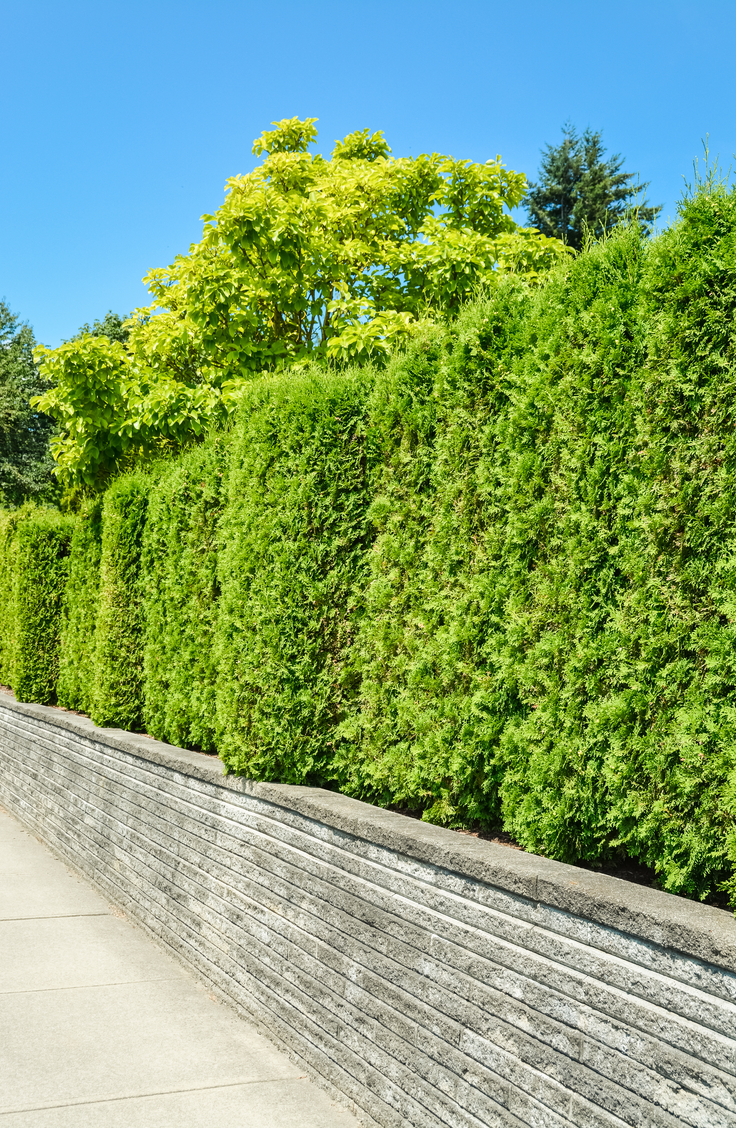
Source Image: beesandroses.com
Design Considerations for Living Fences
Height and Density of Plantings
The height and density of your living fence will depend on your specific needs for privacy, security, and aesthetics.
Table: Recommended Plant Spacing
| Plant Type | Spacing (inches) |
|---|---|
| Small Shrubs | 18-24 inches |
| Medium Shrubs | 24-36 inches |
| Large Shrubs/Trees | 36-48 inches |
Integration with Existing Landscape Features
A living fence should complement your existing landscape features. Consider the following:
Checklist: Landscape Integration Tips
- Existing Trees and Plants: Ensure new plants will not overcrowd existing vegetation.
- Sunlight: Choose spots that provide adequate sunlight for your living fence plants.
- Design Harmony: Select plants that match the aesthetic of your garden.
Table: Example of Plant Integration
| Feature | Suitable Plants |
|---|---|
| Along a Pathway | Boxwood, Lavender |
| Around a Patio | Hydrangea, Lilac |
| Bordering a Lawn | Privet, Yew |
Planning and Site Preparation
Assessing Site Conditions
Before planting, assess your site conditions to ensure the health and growth of your living fence.
Checklist: Site Assessment Steps
- Sun Exposure: Determine the amount of sunlight the area receives.
- Soil Testing: Check soil pH and nutrients.
- Drainage: Ensure the site has good drainage to prevent waterlogging.
Clearing and Soil Preparation for Planting
Proper site preparation is crucial for the success of your living fence.
Checklist: Soil Preparation Steps
- Clear Area: Remove weeds, rocks, and debris.
- Soil Amendments: Add compost or other organic matter to enrich soil.
- Tilling: Loosen soil to promote root growth.
Table: Tools for Soil Preparation
| Tool | Use |
|---|---|
| Shovel | Digging and removing debris |
| Rake | Leveling soil and removing rocks |
| Garden Fork | Loosening soil |
| Soil Test Kit | Testing pH and nutrient levels |
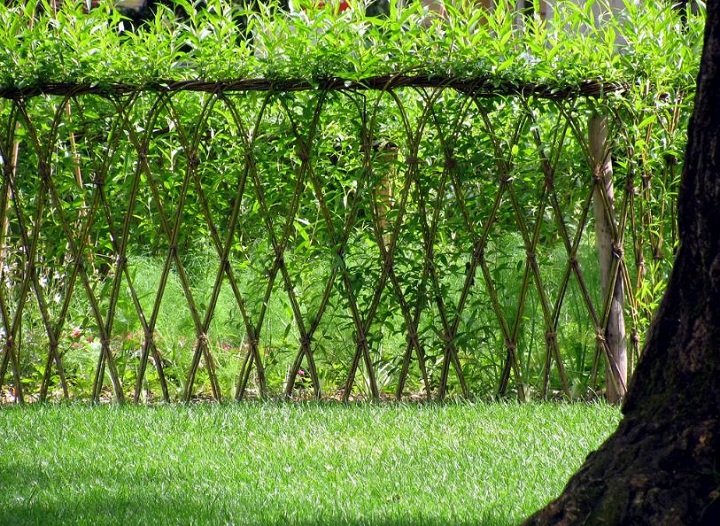
Source Image: www.ecosnippets.com
Establishing Living Fence Plantings
Seedling vs. Mature Plant Installation
Choosing between seedlings and mature plants will affect the initial appearance and growth rate of your living fence.
Table: Seedlings vs. Mature Plants
| Aspect | Seedlings | Mature Plants |
|---|---|---|
| Cost | Less expensive | More expensive |
| Growth Rate | Slower, requires patience | Faster, immediate impact |
| Maintenance | Requires more initial care | Established, less initial care needed |
Spacing and Arrangement of Plants
Proper spacing and arrangement ensure healthy growth and effective coverage.
Checklist: Planting Tips
- Follow Spacing Guidelines: Refer to plant spacing recommendations.
- Stagger Planting: For denser coverage, stagger plants in a zigzag pattern.
- Mulch: Apply mulch to retain moisture and suppress weeds.
Table: Example Planting Arrangement
| Plant Type | Spacing (inches) | Arrangement Type |
|---|---|---|
| Small Shrubs | 18-24 | Staggered Rows |
| Medium Shrubs | 24-36 | Single or Double Row |
| Large Shrubs/Trees | 36-48 | Single Row |
Maintenance of Living Fences
Pruning and Trimming for Shape and Density
Regular pruning and trimming are essential for maintaining the shape and density of your living fence.
Checklist: Pruning Tips
- Prune Regularly: Trim back new growth to maintain desired shape.
- Remove Dead Wood: Cut out any dead or diseased branches.
- Tools: Use sharp pruning shears or hedge trimmers.
Table: Pruning Schedule by Plant Type
| Plant Type | Pruning Frequency |
|---|---|
| Fast-Growing Shrubs | Every 6-8 weeks |
| Slow-Growing Shrubs | Every 10-12 weeks |
| Trees | Annually or biannually |
Irrigation and Fertilization Requirements
Adequate water and nutrients are vital for the health of your living fence.
Checklist: Irrigation Tips
- Regular Watering: Water deeply and consistently, especially in dry periods.
- Drip Irrigation: Consider using drip irrigation to conserve water.
Table: Fertilization Schedule
| Plant Type | Fertilizer Type | Frequency |
|---|---|---|
| Flowering Shrubs | Balanced (10-10-10) | Early spring, mid-summer |
| Evergreen Shrubs | Acidic (Azalea fertilizer) | Spring, fall |
| Deciduous Trees | Slow-release | Spring |
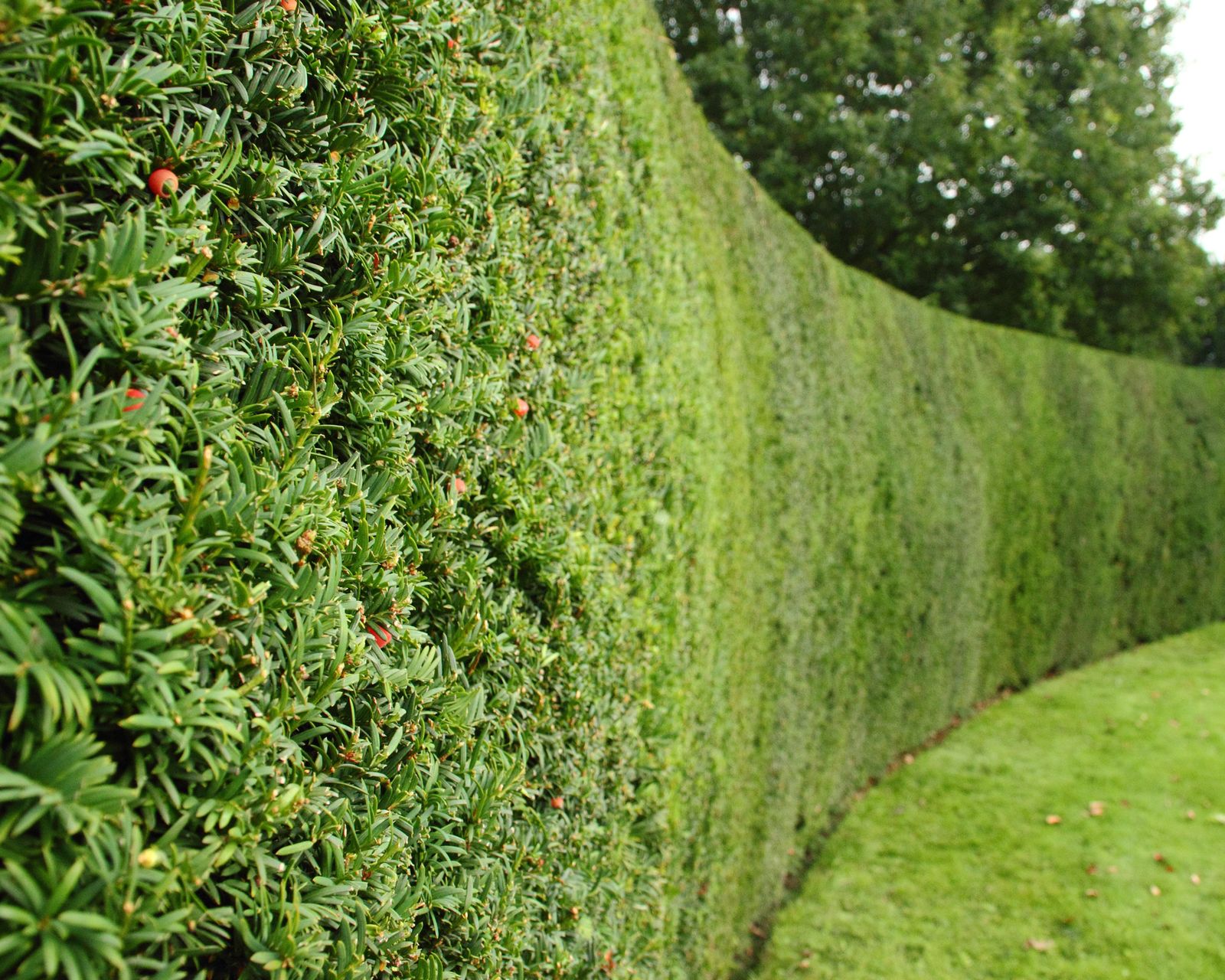
Source Image: www.gardeningetc.com
Living Fence System
Training and Shaping Living Fence Plants
Techniques for Espalier and Hedging
Espalier and hedging techniques help in training plants to grow in specific shapes and patterns.
Checklist: Espalier Tips
- Choose Suitable Plants: Apple, pear, and fig trees work well.
- Support Structure: Use a trellis or wire framework for support.
- Regular Training: Tie new growth to the support structure.
Table: Espalier vs. Hedging
| Technique | Description | Suitable Plants |
|---|---|---|
| Espalier | Training plants to grow flat against a surface | Apple, Pear, Fig |
| Hedging | Shaping plants into dense, formal or informal barriers | Boxwood, Privet, Yew |
Creating Formal vs. Informal Designs
Decide whether you want a formal, manicured look or a more natural, informal appearance for your living fence.
Table: Formal vs. Informal Designs
| Design Type | Characteristics | Suitable Plants |
|---|---|---|
| Formal | Symmetrical, neatly trimmed, uniform | Boxwood, Holly, Privet |
| Informal | Natural, irregular shapes, diverse | Mixed shrubs, flowering bushes |

Source Image: www.pinterest.com
Benefits Beyond Boundary Definition
Wildlife Habitat and Biodiversity Support
Living fences can significantly enhance local biodiversity by providing habitats for wildlife.
Table: Wildlife Benefits of Living Fences
| Wildlife Type | Benefits Provided |
|---|---|
| Birds | Nesting sites, food sources |
| Pollinators | Nectar from flowers, shelter |
| Small Mammals | Shelter, food sources |
Windbreak and Erosion Control Functions
Living fences can protect your property from wind and reduce soil erosion.
Checklist: Windbreak Tips
- Plant in Rows: Multiple rows provide better wind protection.
- Dense Planting: Use dense species to block wind effectively.
Table: Plants for Windbreaks and Erosion Control
| Purpose | Suitable Plants |
|---|---|
| Windbreak | Pine, Spruce, Arborvitae |
| Erosion Control | Willow, Dogwood, Elderberry |
Living Fence Systems for Edible Landscaping
Incorporating Fruit-Bearing Shrubs and Trees
Combine the benefits of a living fence with the productivity of an edible landscape.
Checklist: Edible Plants for Living Fences
- Fruit Trees: Apple, Pear, Cherry
- Berry Bushes: Blueberry, Raspberry, Currant
Table: Fruit-Bearing Plants for Living Fences
| Plant Type | Benefits |
|---|---|
| Apple Trees | Provide fruit, shade, and aesthetic appeal |
| Raspberry Bushes | Produce berries, attract pollinators |
| Blueberry Bushes | Offer berries, support wildlife |
Harvesting from Multi-Functional Living Fences
Enjoy the fruits of your labor by harvesting from your living fence.
Checklist: Harvesting Tips
- Timing: Harvest fruit at peak ripeness for best flavor.
- Pruning: Regular pruning encourages more fruit production.
Table: Harvest Seasons for Common Edible Plants
| Plant Type | Harvest Season |
|---|---|
| Apple Trees | Late summer to fall |
| Blueberry Bushes | Summer |
| Raspberry Bushes | Mid-summer to fall |

Source Image: www.pinterest.fr
Living Fence Alternatives to Traditional Fencing
Cost Comparison with Traditional Fencing Materials
Living fences can be more cost-effective than traditional fencing options over the long term.
Table: Cost Comparison
| Fencing Type | Initial Cost | Maintenance Cost | Lifespan |
|---|---|---|---|
| Wooden Fence | High | Moderate | 10-15 years |
| Metal Fence | Very High | Low | 20+ years |
| Living Fence | Low | Low | Potentially indefinite |
Environmental and Aesthetic Advantages
Living fences offer several advantages over traditional fencing in terms of environmental impact and aesthetics.
Checklist: Environmental Benefits
- Carbon Sequestration: Plants absorb CO2.
- Biodiversity: Supports a variety of species.
- Aesthetic Appeal: Changes with seasons, offering dynamic beauty.
Table: Environmental vs. Aesthetic Benefits
| Benefit Type | Description |
|---|---|
| Environmental | Reduces carbon footprint, supports wildlife |
| Aesthetic | Enhances landscape with seasonal changes |
Living Fences for Sustainable Land Management
Integration with Permaculture Principles
Living fences can be an integral part of a permaculture system, promoting sustainability and resilience.
Checklist: Permaculture Integration
- Diverse Plantings: Use a variety of species.
- Layering: Incorporate different plant heights for diversity.
- Companion Planting: Use plants that support each other.
Table: Permaculture Principles for Living Fences
| Principle | Application |
|---|---|
| Diversity | Use multiple species for resilience |
| Soil Health | Include nitrogen-fixing plants |
| Water Conservation | Use drought-tolerant species |
Reducing Ecological Footprint with Natural Barriers
Living fences help reduce your ecological footprint by providing natural barriers that require minimal resources.
Checklist: Reducing Ecological Footprint
- Native Plants: Choose native species to support local ecosystems.
- Low Input: Select plants that require minimal water and fertilizer.
Table: Eco-Friendly Plant Choices
| Plant Type | Ecological Benefits |
|---|---|
| Native Shrubs | Supports local wildlife, low maintenance |
| Drought-Tolerant Plants | Conserves water, resilient in dry conditions |
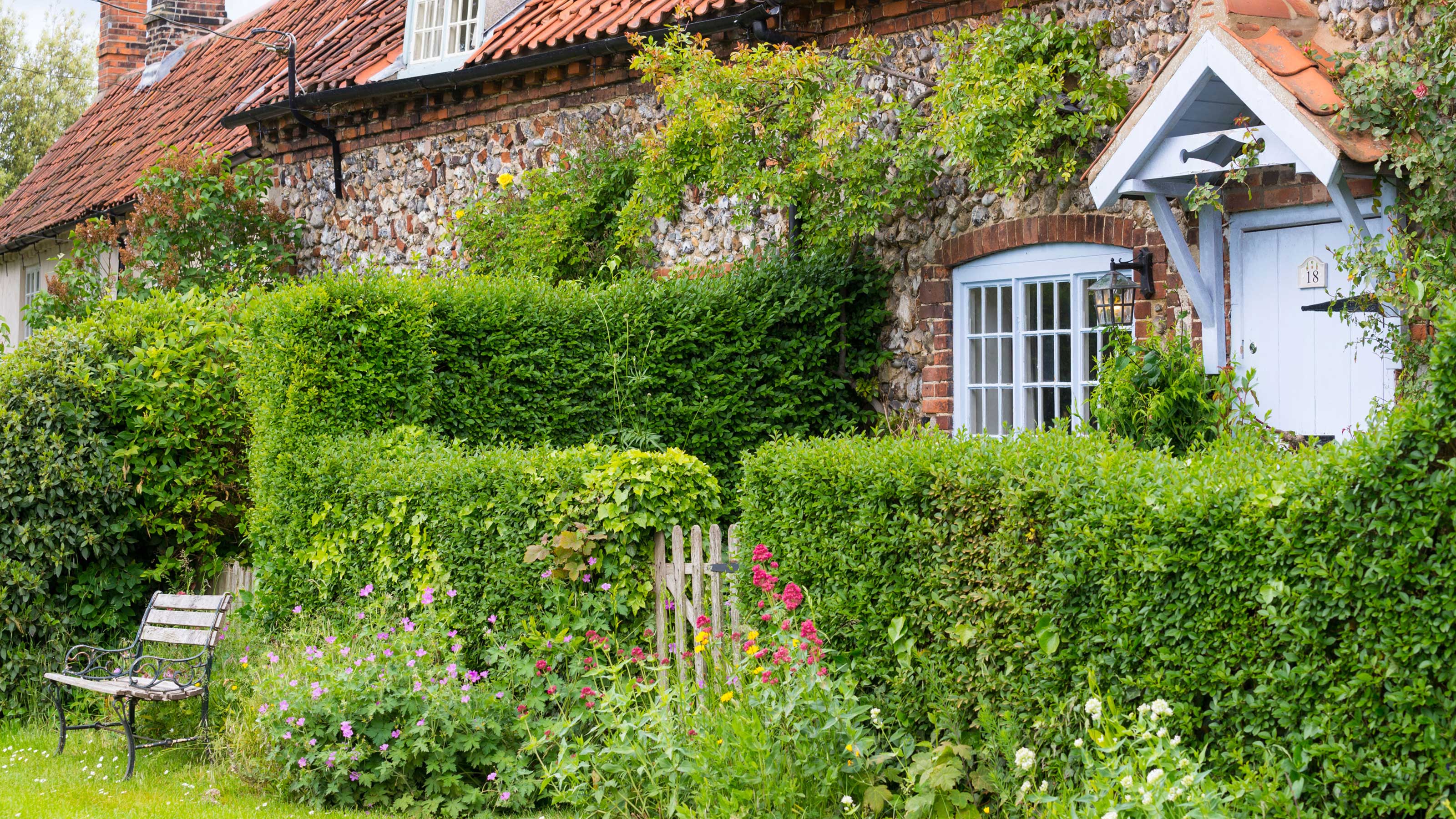
Source Image: www.gardeningetc.com
Living Fence System
Living Fence Systems in Urban Gardening
Screening and Noise Reduction in Urban Spaces
Living fences are perfect for urban environments, offering privacy and noise reduction.
Checklist: Urban Living Fence Tips
- Compact Species: Choose plants that thrive in limited space.
- Vertical Growth: Train plants to grow upwards to save space.
Table: Urban-Friendly Plants
| Plant Type | Benefits |
|---|---|
| Bamboo | Fast-growing, effective screen |
| Climbing Roses | Vertical growth, aesthetic appeal |
| Boxwood | Dense foliage, easy to shape |
Vertical Gardening Techniques for Living Fences
Vertical gardening techniques can maximize space in urban environments.
Checklist: Vertical Gardening Tips
- Trellises and Arbors: Use structures to support climbing plants.
- Compact Varieties: Select compact or dwarf plant varieties.
Table: Vertical Gardening Structures
| Structure Type | Suitable Plants |
|---|---|
| Trellis | Ivy, Clematis, Climbing Roses |
| Arbor | Grapevine, Honeysuckle |
| Wall Planters | Herbs, Small Flowering Plants |

Source Image: greatgrowins.com
Enhancing Living Fences with Companion Plantings
Choosing Complementary Plants for Pest Control and Soil Health
Companion planting can enhance the health and effectiveness of your living fence.
Checklist: Companion Planting Tips
- Pest Control: Use plants that repel pests naturally.
- Soil Health: Incorporate plants that improve soil fertility.
Table: Companion Plants for Living Fences
| Primary Plant | Companion Plant | Benefit |
|---|---|---|
| Rose | Garlic | Repels aphids |
| Apple Tree | Comfrey | Adds nutrients to soil |
| Blueberry | Clover | Fixes nitrogen |
Attracting Beneficial Insects and Pollinators
Attract beneficial insects and pollinators to enhance your garden’s health.
Checklist: Attracting Beneficial Insects
- Flowering Plants: Choose plants that provide nectar and pollen.
- Habitat: Create habitats like insect hotels.
Table: Plants for Attracting Beneficial Insects
| Plant Type | Beneficial Insects Attracted |
|---|---|
| Lavender | Bees, Butterflies |
| Marigold | Ladybugs, Hoverflies |
| Yarrow | Parasitic Wasps, Predatory Beetles |
Troubleshooting Common Issues with Living Fences
Dealing with Pests and Diseases
Maintaining a healthy living fence involves managing pests and diseases effectively.
Checklist: Pest and Disease Management
- Regular Inspection: Check plants regularly for signs of pests or disease.
- Organic Solutions: Use organic pesticides and fungicides.
Table: Common Pests and Solutions
| Pest Type | Symptoms | Solution |
|---|---|---|
| Aphids | Sticky residue, curled leaves | Neem oil, insecticidal soap |
| Powdery Mildew | White powder on leaves | Prune affected areas, fungicide |
| Caterpillars | Chewed leaves | Hand-pick, Bacillus thuringiensis (Bt) |
Addressing Maintenance Challenges for Long-Term Success
Long-term success requires addressing maintenance challenges promptly.
Checklist: Maintenance Tips
- Water Management: Ensure consistent watering.
- Soil Health: Regularly amend soil with compost or organic matter.
Table: Common Maintenance Challenges
| Challenge | Solution |
|---|---|
| Watering | Install drip irrigation |
| Soil Compaction | Aerate soil, add organic matter |
| Overgrowth | Regular pruning and trimming |
Community Engagement and Living Fence Projects
Collaborative Efforts in Establishing Public Living Fences
Engage your community in establishing public living fences for shared benefits.
Checklist: Community Engagement Tips
- Workshops: Organize workshops to educate the community.
- Volunteering: Encourage community members to volunteer in planting.
Table: Benefits of Community Living Fence Projects
| Benefit Type | Description |
|---|---|
| Social | Builds community spirit, encourages collaboration |
| Environmental | Enhances local biodiversity, improves air quality |
| Educational | Teaches sustainable gardening practices |
Educational Outreach and Sharing Knowledge on Living Fence Systems
Sharing knowledge about living fences can promote sustainable practices.
Checklist: Educational Outreach Tips
- Public Talks: Host talks or webinars on living fence systems.
- Educational Materials: Provide brochures or online resources.
Table: Outreach Methods
| Method | Description |
|---|---|
| Workshops | Hands-on learning experiences |
| Social Media | Share tips and success stories |
| Community Gardens | Demonstrate living fence techniques |

